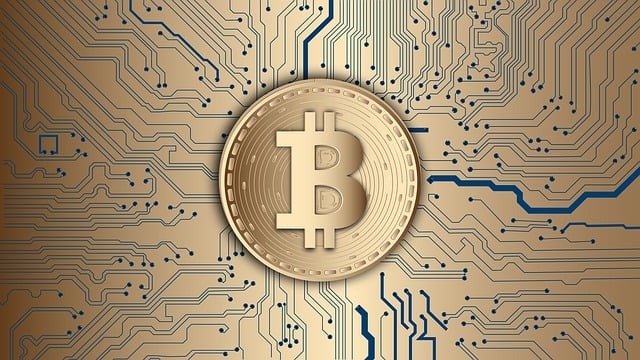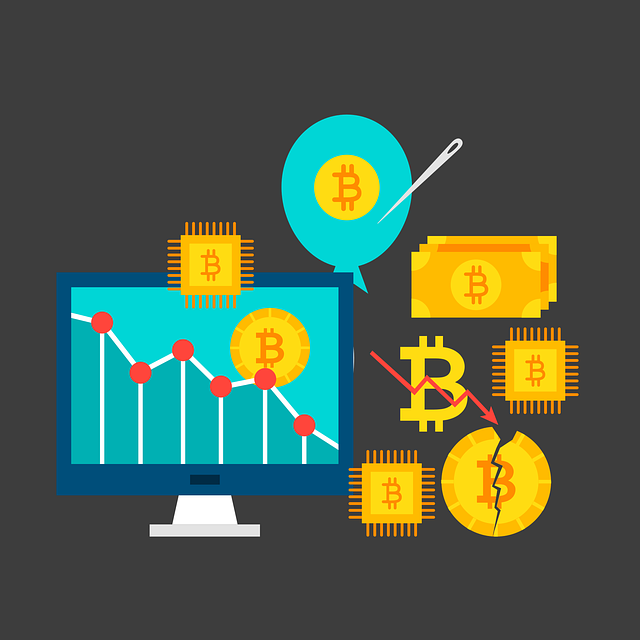The impact of inflation on cryptocurrency markets is a double-edged sword. Rising inflation pushes investors towards cryptocurrencies as a hedge against currency devaluation, boosting demand for assets like Bitcoin and Ethereum. Yet, sudden inflation spikes can cause market volatility, negatively impacting crypto prices if investors perceive them as less stable than traditional fiat currencies. Understanding this dynamic relationship is crucial for both investors and regulators to navigate the volatile cryptocurrency landscape effectively.
“Unraveling the intricate relationship between inflation and cryptocurrencies is paramount in today’s dynamic digital landscape. This article aims to explore how inflation influences crypto market dynamics and investor strategies. We delve into the ‘Ripple Effect’—the momentous impact of rising inflation on cryptocurrency prices and investment behavior. By examining these factors, we empower investors with insights crucial for navigating the volatile crypto markets and understanding the changing macroeconomic environment.”
- Understanding the Relationship Between Inflation and Cryptocurrencies
- The Ripple Effect: How Inflation Impacts Crypto Market Dynamics and Investor Behavior
Understanding the Relationship Between Inflation and Cryptocurrencies

The relationship between inflation and cryptocurrencies is an intriguing aspect of the digital asset landscape. In times of rising inflation, investors often turn to assets that can preserve or even increase their purchasing power. This has led to a significant interest in cryptocurrencies as a potential hedge against inflation. When traditional currencies lose value due to rising prices, cryptocurrencies like Bitcoin and Ethereum may become more attractive as they offer limited supply, which can potentially protect against the eroding effects of inflation.
The impact of inflation on crypto markets is twofold. On one hand, it drives investors towards digital assets seeking better returns and protection. On the other, high inflation rates can negatively affect cryptocurrency prices if investors perceive existing cryptocurrencies as less stable or susceptible to central bank policies compared to traditional fiat currencies. Understanding this dynamic relationship is crucial for both investors and regulators navigating the ever-evolving crypto space.
The Ripple Effect: How Inflation Impacts Crypto Market Dynamics and Investor Behavior

In the volatile world of cryptocurrency, the ripple effect of inflation can significantly alter market dynamics and investor behavior. As traditional fiat currencies lose purchasing power due to rising inflation rates, investors often turn to digital assets like cryptocurrencies as a hedge against this economic headwind. The impact of inflation on crypto markets is multifaceted; it can drive up asset prices as more investors seek refuge in these decentralized assets, viewing them as a store of value that can preserve wealth better than traditional currencies.
However, the relationship between inflation and cryptocurrency is not without complexities. Sudden spikes in inflation can lead to heightened market volatility, with investors reacting to uncertain economic prospects by selling off other asset classes, including cryptocurrencies. This dynamic can result in significant price swings, affecting investor confidence and shaping market sentiment. Understanding the intricate interplay between inflation and crypto markets is crucial for both seasoned investors and newcomers alike, as it influences risk management strategies and portfolio diversification decisions.
The intricate relationship between inflation and cryptocurrencies has revealed a dynamic interplay that significantly influences market behavior. As inflation rates rise, investors often turn to digital assets like crypto as a hedge against diminishing purchasing power. This shift in investor sentiment can lead to notable volatility in crypto markets, with certain coins experiencing rapid growth or decline. Understanding the ripple effect of inflation is crucial for navigating these unpredictable waters, enabling investors to make informed decisions and potentially mitigate risks associated with the ever-changing economic landscape.
